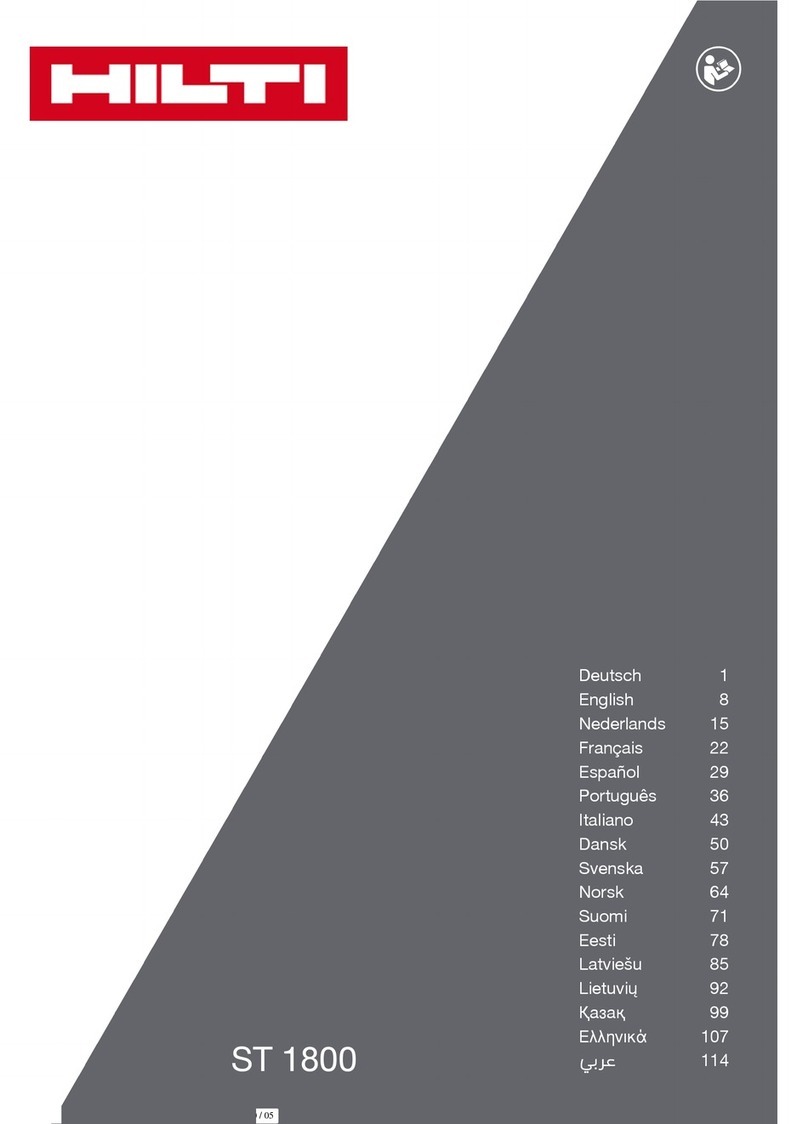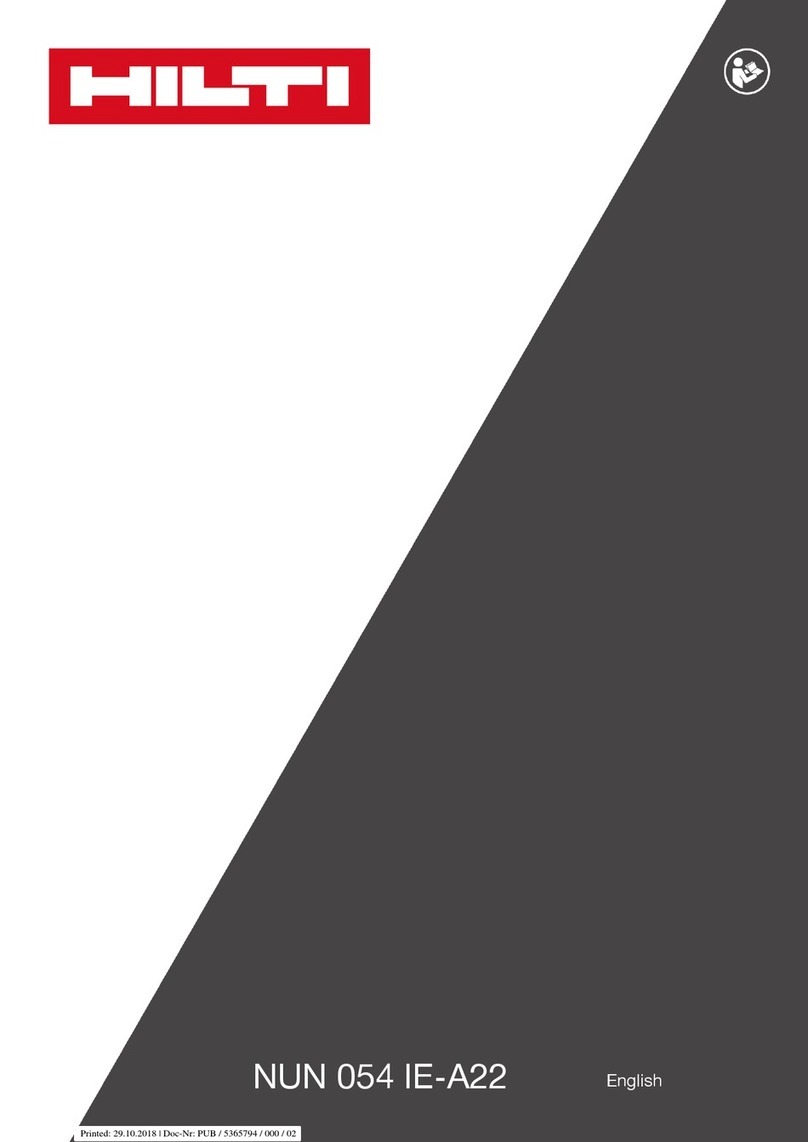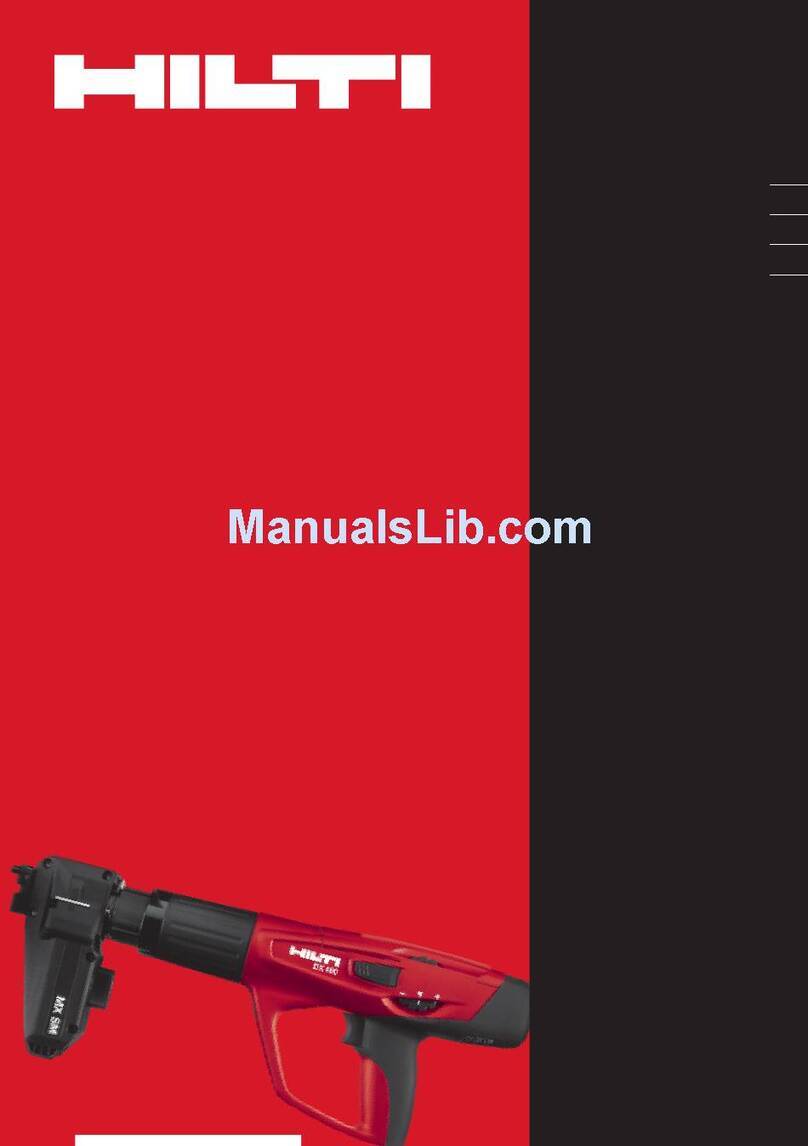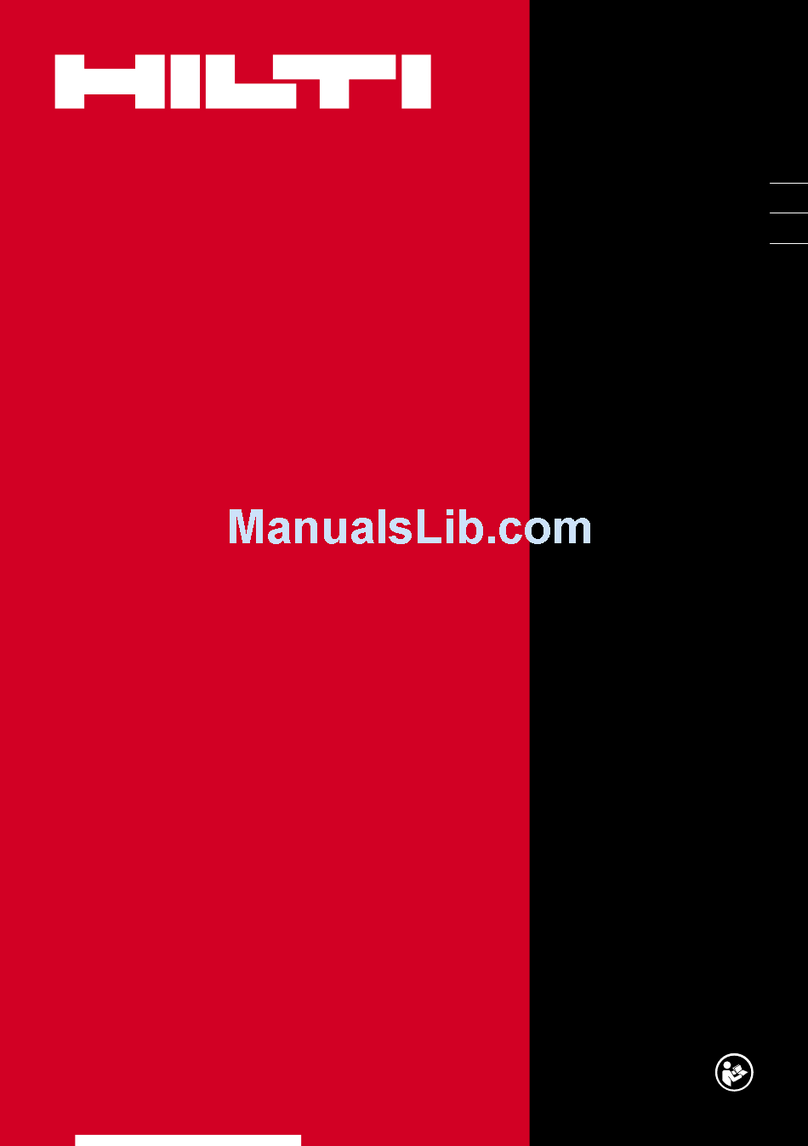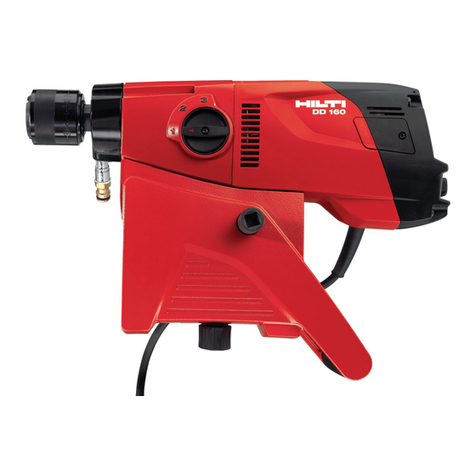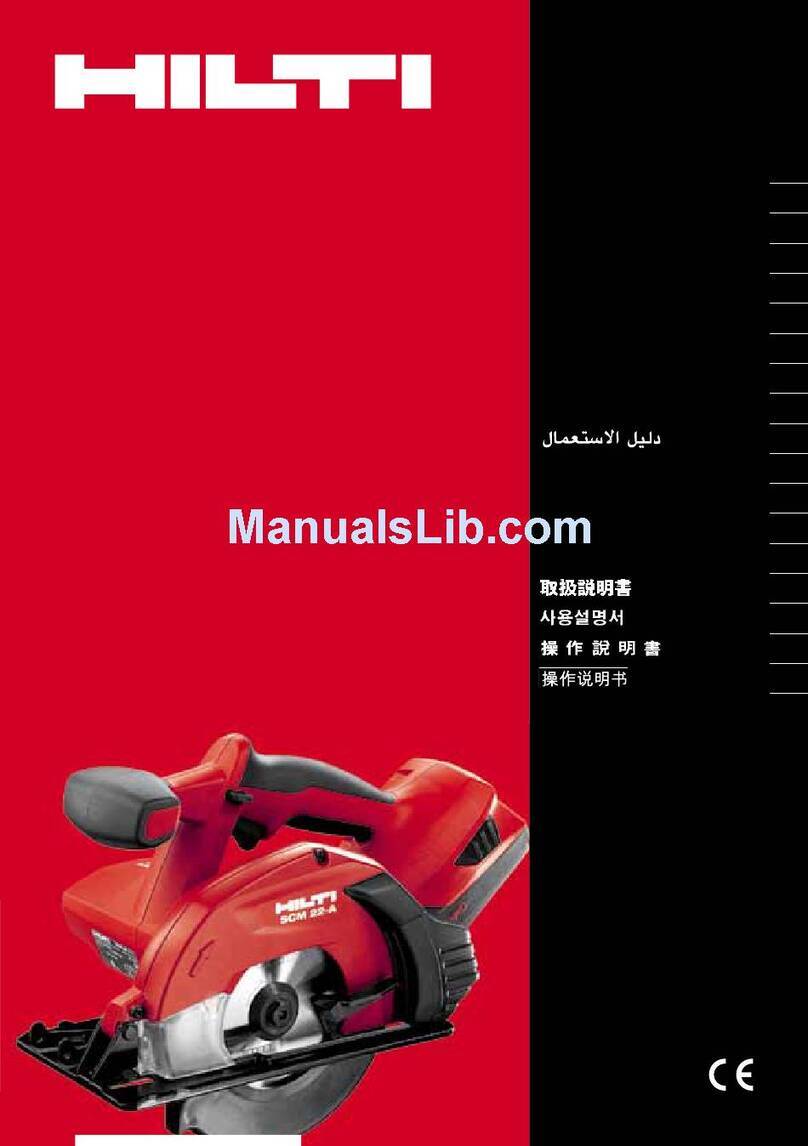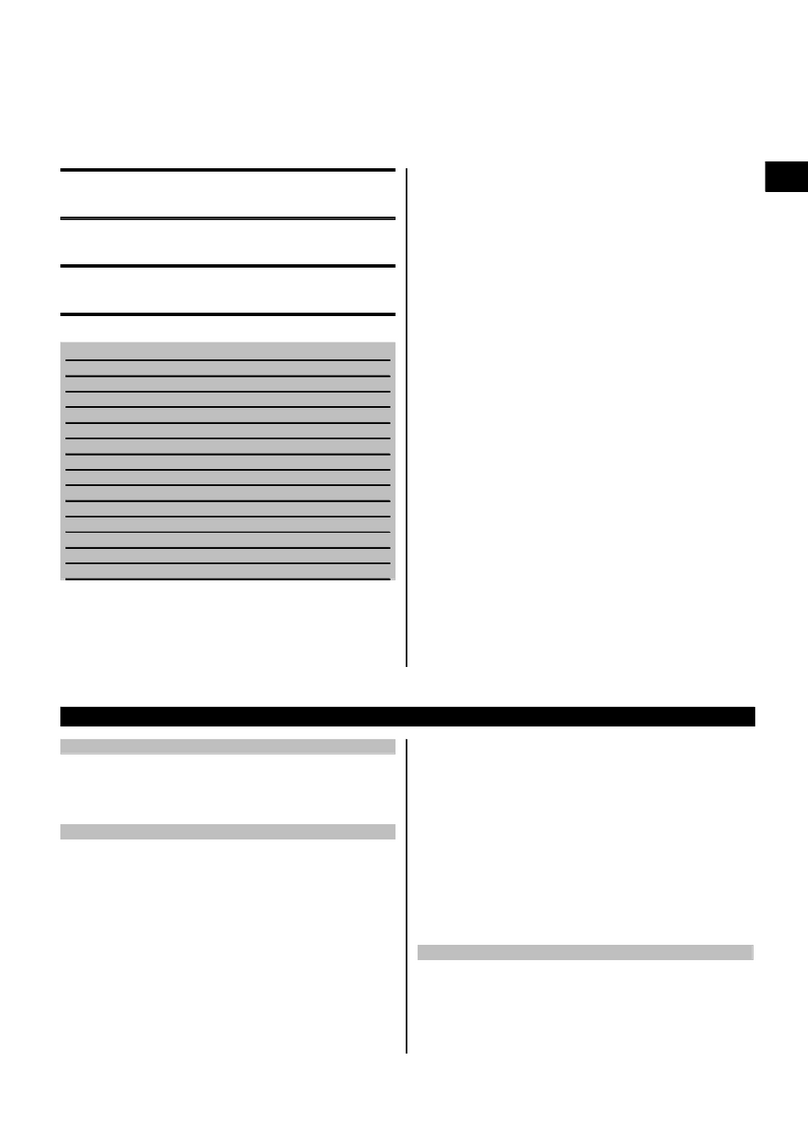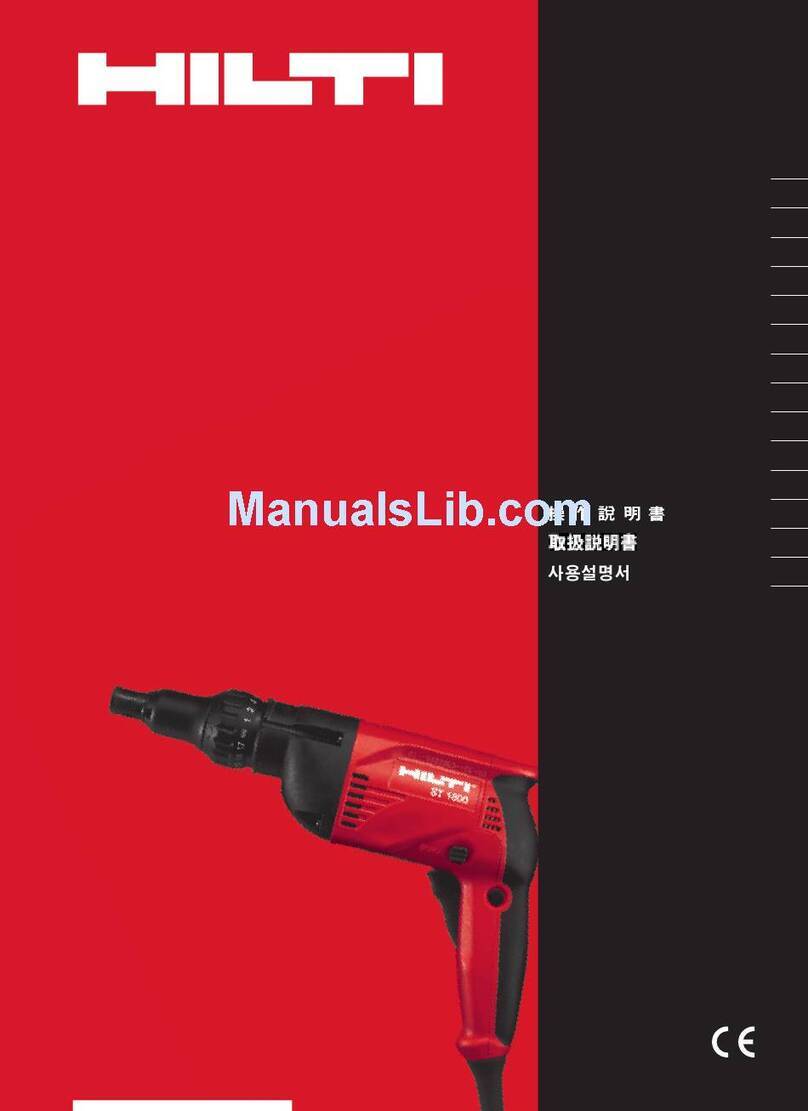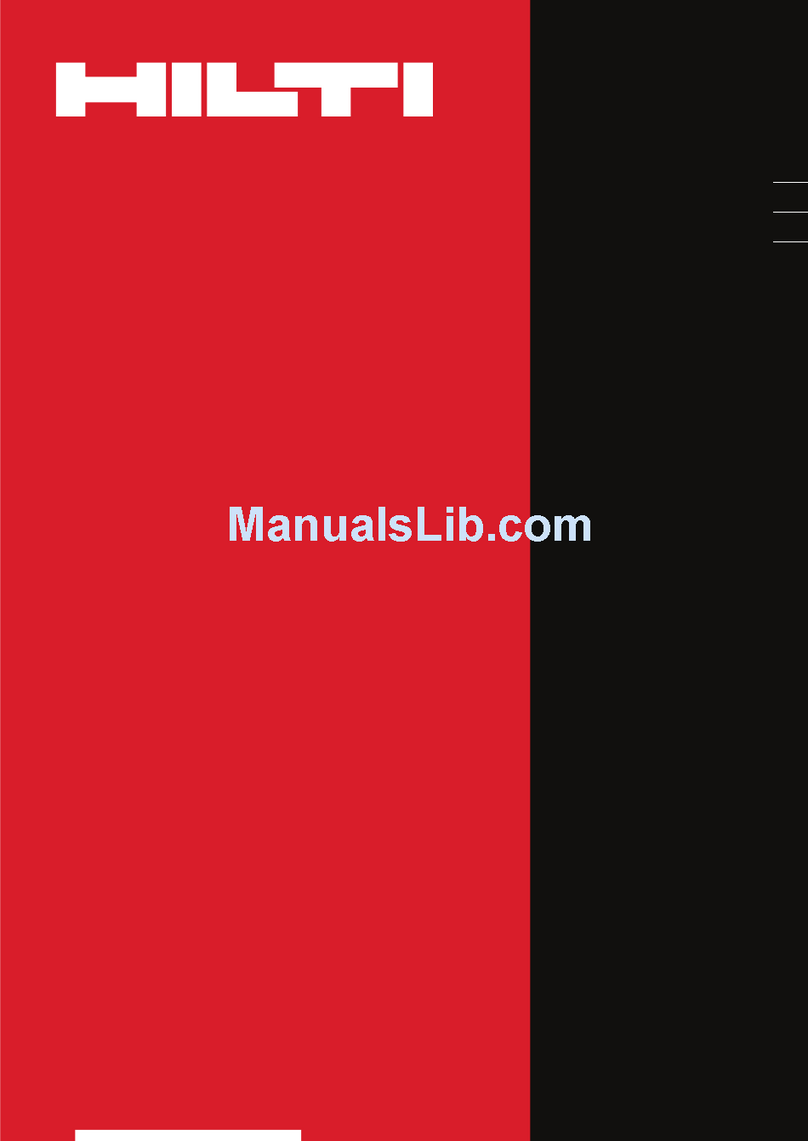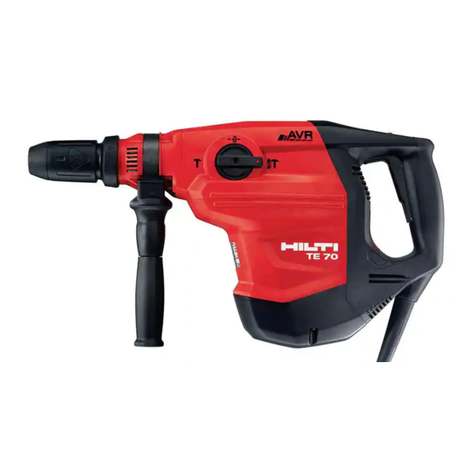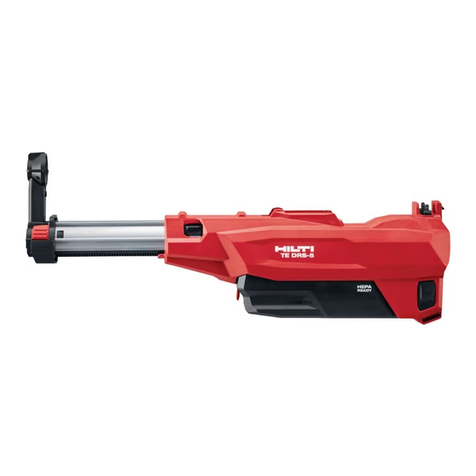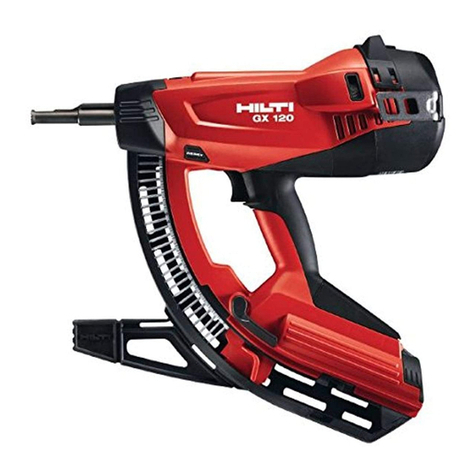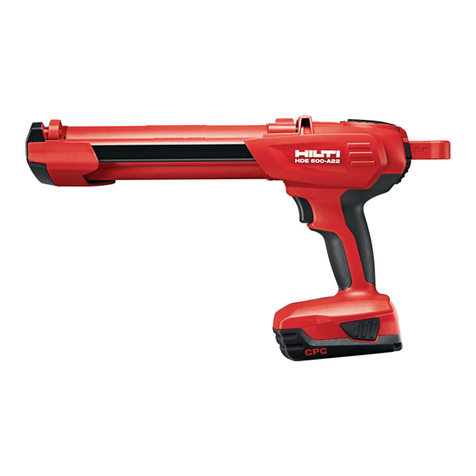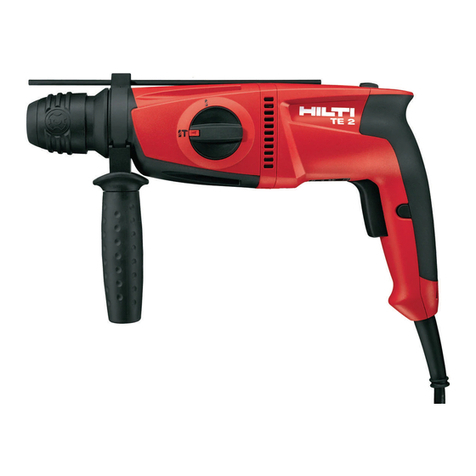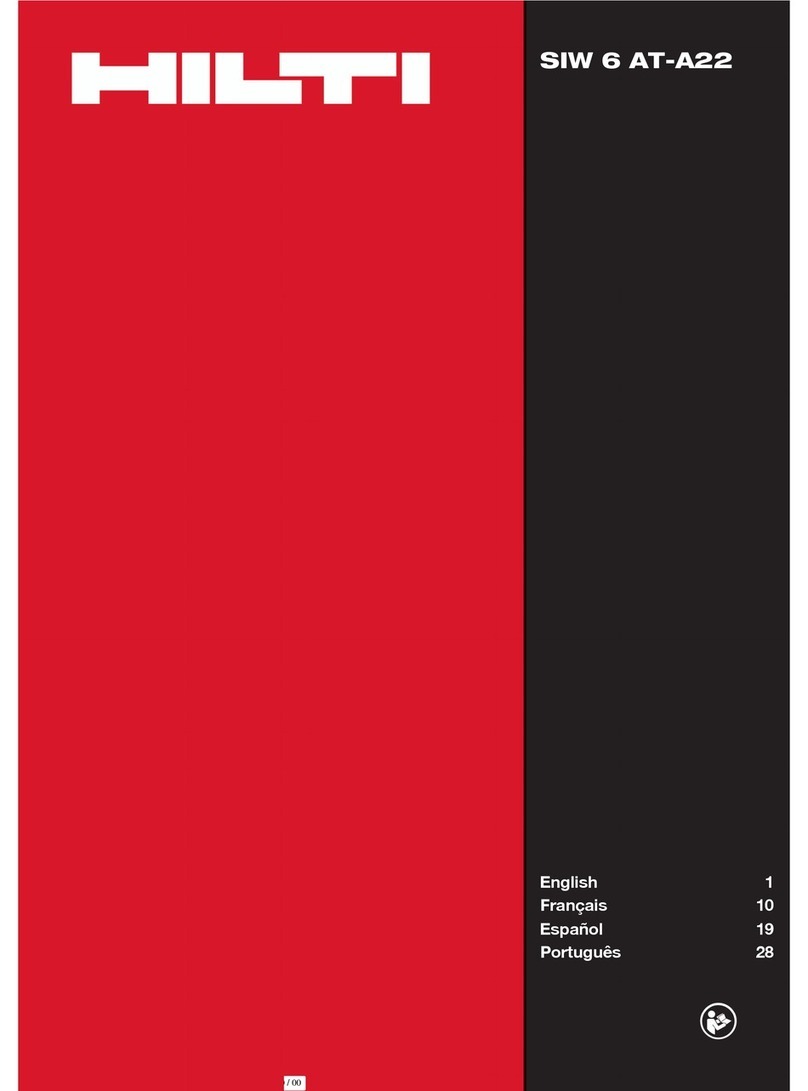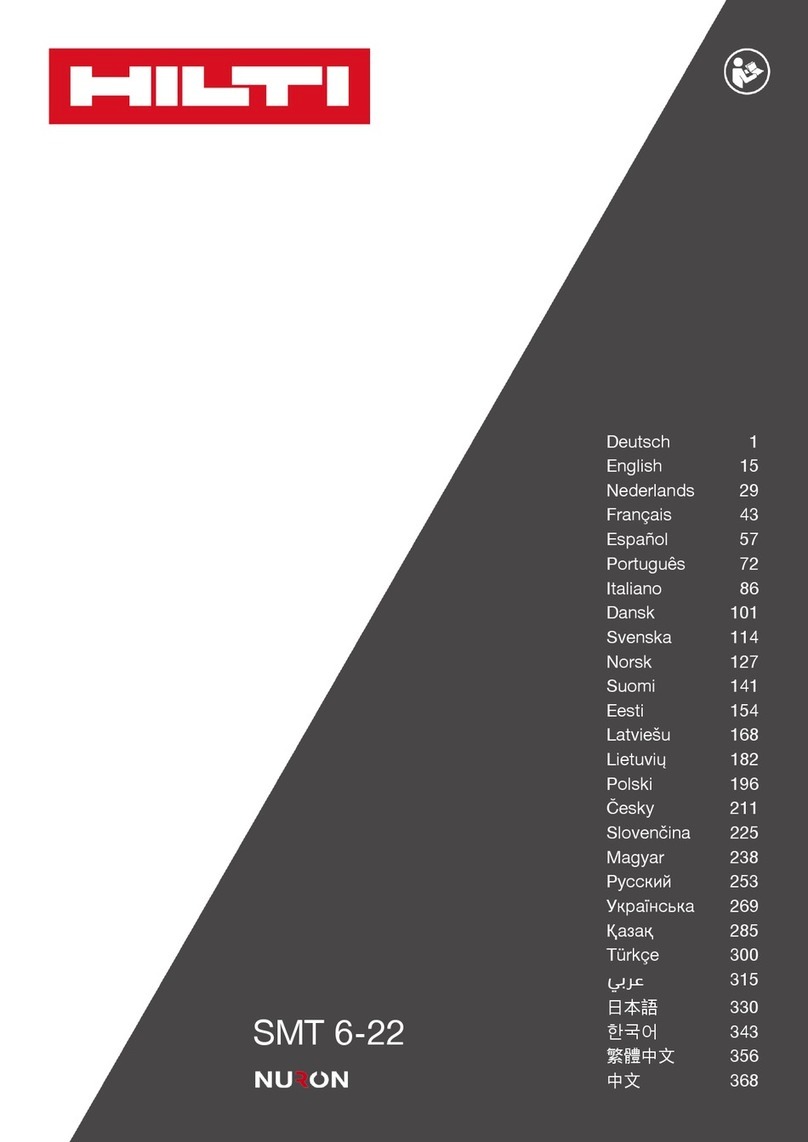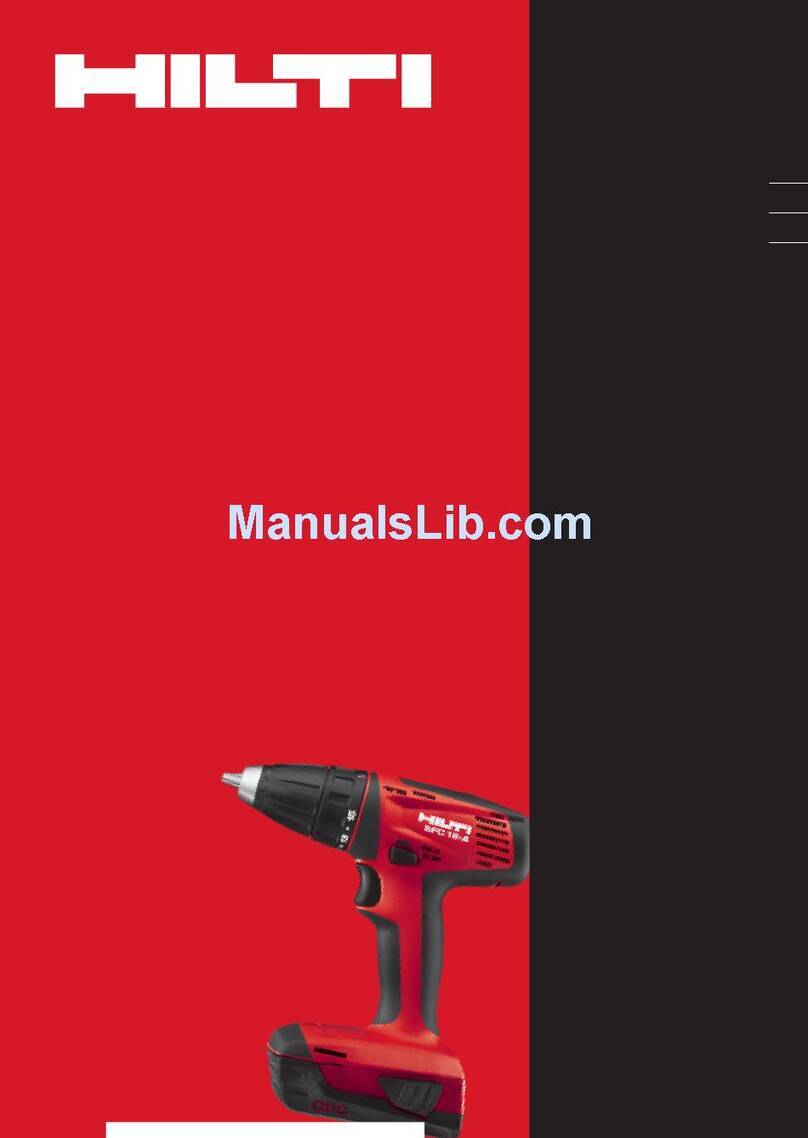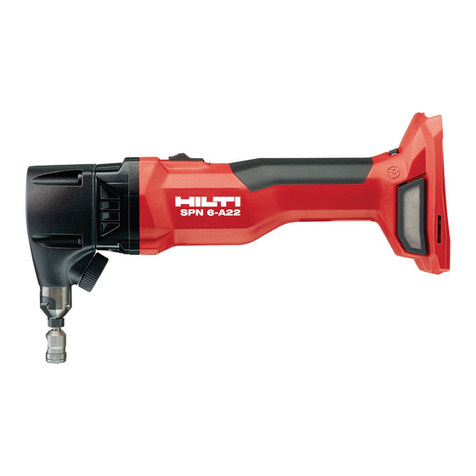2
ORIGINAL
BEDIENUNGSANLEITUNG
Sicherheitshinweise
HINWEIS
Die Sicherheitshinweise in Kapitel 1 beinhalten al-
le allgemeinen Sicherheitshinweise fur Elektrowerkzeuge,
ie gemäß en anwen baren Normen in er Be-
ienungsanleitung aufzufuhren sin . Es können em-
nach Hinweise enthalten sein, ie fur ieses Gerät
nicht relevant sin .
1. Allgemeine Sicherheitshinweise fur
Elektrowerkzeuge
a) WARNUNG! Lesen Sie alle Sicherheits -
hinweise und Anweisungen. Versäumnisse bei
er Einhaltung er Sicherheitshinweise un An-
weisungen können elektrischen Schlag, Bran un /o er
schwere Verletzungen verursachen. Bewahren
Sie alle Sicherheitshinweise und Anweisun-
gen fur die ukunft auf. Der in en Sicher-
heitshinweisen verwen ete Begriff "Elektro-
werkzeug" bezieht sich auf netzbetriebene Elek-
trowerkzeuge (mit Netzkabel) un auf akkubetriebene
Elektrowerkzeuge (ohne Netzkabel).
1.1 Arbeitsplatzsicherheit
a) Halten Sie Ihren Arbeitsbereich sauber und gut
beleuchtet. Unor nung o er unbeleuchtete Ar-
beitsbereiche können zu Unfällen fuhren.
b) Arbeiten Sie mit dem Elektrowerkzeug nicht
in explosionsgefährdeter Umgebung, in der
sich brennbare Flussigkeiten, Gase oder Stäu-
be befinden. Elektrowerkzeuge erzeugen Fun-
ken, ie en Staub o er ie Dämpfe entzun en
können.
c) Halten Sie Kinder und andere Personen
während der Benutzung des Elektrowerkzeugs
fern. Bei Ablenkung können Sie ie Kontrolle uber
as Gerät verlieren.
1.2 Elektrische Sicherheit
a) Der Anschlussstecker des Elektrowerkzeuges
muss in die Steckdose passen. Der Stecker
darf in keiner Weise verändert werden. Ver-
wenden Sie keine Adapterstecker gemeinsam
mit schutzgeerdeten Elektrowerkzeugen. Un-
verän erte Stecker un passen e Steck osen ver-
ringern as Risiko eines elektrischen Schlages.
b) Vermeiden Sie Körperkontakt mit geerdeten
Oberflächen wie von Rohren, Heizungen, Her-
den und Kuhlschränken. Es besteht ein erhöhtes
Risiko urch elektrischen Schlag, wenn Ihr Kör-
per geer et ist.
c) Halten Sie Elektrowerkzeuge von Regen
oder Nässe fern. Das Ein ringen von Wasser
in ein Elektrowerkzeug erhöht as Risiko eines
elektrischen Schlages.
) weckentfremden Sie das Kabel nicht, um das
Elektrowerkzeug zu tragen, aufzuhängen
oder um den Stecker aus der Steckdose zu
ziehen. Halten Sie das Kabel fern von Hitze,
Öl, scharfen Kanten oder sich bewegenden
Geräteteilen. Beschä igte o er verwickelte
Kabel erhöhen as Risiko eines elektrischen Schlages.
e) Wenn Sie mit einem Elektrowerkzeug im Frei-
en arbeiten, verwenden Sie nur Verlängerungskabel,
die auch fur den Aussenbereich geeignet sind.
Die Anwen ung eines fur en Aussenbereich ge-
eigneten Verlängerungskabels verringert as Ri-
siko eines elektrischen Schlages.
f) Wenn der Betrieb des Elektrowerkzeuges in
feuchter Umgebung nicht vermeidbar ist, ver-
wenden Sie einen Fehlerstromschutzschalter.
Der Einsatz eines Fehlerstromschutz schalters ver-
min ert as Risiko eines elektrischen Schlages.
1.3 Sicherheit von Personen
a) Seien Sie aufmerksam, achten Sie darauf, was
Sie tun, und gehen Sie mit Vernunft an die Ar-
beit mit einem Elektrowerkzeug. Benutzen Sie
kein Elektrowerkzeug, wenn Sie mude sind oder
unter dem Einfluss von Drogen, Alkohol oder
Medikamenten stehen. Ein Moment er Un-
achtsamkeit beim Gebrauch es Elektrowerkzeuges
kann zu ernsthaften Verletzungen fuhren.
b) Tragen Sie persönliche Schutzausrustung und
immer eine Schutzbrille. Das Tragen persön-
licher Schutzausrustung, wie Staubmaske, rutsch-
feste Sicherheitsschuhe, Schutzhelm o er Gehör-
schutz, je nach Art un Einsatz es Elektrowerkzeuges,
verringert as Risiko von Verletzungen.
c) Vermeiden Sie eine unbeabsichtigte Inbe-
triebnahme. Vergewissern Sie sich, dass das
Elektrowerkzeug ausgeschaltet ist, bevor
Sie es an die Stromversorgung und/oder den
Akku anschliessen, es aufnehmen oder tra-
gen. Wenn Sie beim Tragen es Elektrowerkzeuges
en Finger am Schalter haben o er as Gerät
eingeschaltet an ie Stromversorgung anschliessen,
kann ies zu Unfällen fuhren.
) Entfernen Sie Einstellwerkzeuge oder Schrau-
benschlussel, bevor Sie das Elektrowerkzeug
einschalten. Ein Werkzeug o er Schlussel, er
sich in einem rehen en Geräteteil befin et, kann
zu Verletzungen fuhren.
e) Vermeiden Sie eine abnormale Körperhaltung.
Sorgen Sie fur einen sicheren Stand und hal-
ten Sie jederzeit das Gleichgewicht. Da urch
können Sie as Elektrowerkzeug in unerwarte-
ten Situationen besser kontrollieren.
f) Tragen Sie geeignete Kleidung. Tragen Sie kei-
ne weite Kleidung oder Schmuck. Halten Sie
Haare, Kleidung und Handschuhe fern von sich
bewegenden Teilen. Lockere Klei ung, Schmuck
o er lange Haare können von sich bewegen en
Teilen erfasst wer en.
g) Wenn Staubabsaug- und -auffangeinrichtun-
gen montiert werden können, vergewissern
Sie sich, dass diese angeschlossen sind und
richtig verwendet werden. Verwen ung einer
Staubabsaugung kann Gefähr ungen urch
Staub verringern.
1.4 Verwendung und Behandlung des
Elektrowerkzeuges
a) Überlasten Sie das Gerät nicht. Verwenden Sie
fur Ihre Arbeit das dafur bestimmte Elektro-
werkzeug. Mit em passen en Elektrowerkzeug
arbeiten Sie besser un sicherer im angegebe-
nen Leistungsbereich.
b) Benutzen Sie kein Elektrowerkzeug, dessen
Schalter defekt ist. Ein Elektrowerkzeug, as sich
nicht mehr ein- o er ausschalten lässt, ist gefährlich
un muss repariert wer en.
c) iehen Sie den Stecker aus der Steckdose und/oder
entfernen Sie den Akku, bevor Sie Geräte-
einstellungen vornehmen, ubehörteile wech-
seln oder das Gerät weglegen. Diese Vor-
sichtsmassnahme verhin ert en unbeabsichtigten
Start es Elektrowerkzeuges.
) Bewahren Sie unbenutzte Elektrowerkzeuge
ausserhalb der Reichweite von Kindern auf.
Lassen Sie Personen das Gerät nicht benut-
zen, die mit diesem nicht vertraut sind oder
diese Anweisungen nicht gelesen haben. Elek-
trowerkzeuge sin gefährlich, wenn Sie von un-
erfahrenen Personen benutzt wer en.
e) Pflegen Sie Elektrowerkzeuge mit Sorgfalt. Kon-
trollieren Sie, ob bewegliche Geräteteile ein-
wandfrei funktionieren und nicht klemmen, ob
Teile gebrochen oder so beschädigt sind, dass
die Funktion des Elektrowerkzeuges beeinträchtigt
ist. Lassen Sie beschädigte Teile vor dem Ein-
satz des Gerätes reparieren. Viele Unfälle ha-
ben Ihre Ursache in schlecht gewarteten Elek-
trowerkzeugen.
f) Halten Sie Schneidwerkzeuge scharf und sau-
ber. Sorgfältig gepflegte Schnei werkzeuge mit
scharfen Schnei kanten verklemmen sich weni-
ger un sin leichter zu fuhren.
g) Verwenden Sie Elektrowerkzeug, ubehör, Ein-
satzwerkzeuge usw. entsprechend diesen An-
weisungen. Berucksichtigen Sie dabei die Ar-
beitsbedingungen und die auszufuhrende Tätig-
keit. Der Gebrauch von Elektrowerkzeugen fur
an ere als ie vorgesehenen Anwen ungen kann
zu gefährlichen Situationen fuhren.
1.5 Service
a) Lassen Sie Ihr Gerät nur von qualifiziertem Fach-
personal und nur mit Original-Ersatzteilen re-
parieren. Damit wir sichergestellt, ass ie Si-
cherheit es Elektrowerkzeuges erhalten bleibt.
Printed: 08.07.2013 | Doc-Nr: PUB / 5071241 / 000 / 01
